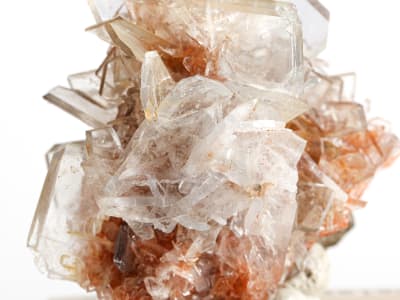Celestite, also called celestine, is named for the Latin coelestis, meaning "heavenly," in reference to its often sky-blue color. This unique gem often forms beautiful transparent to blue tabular crystals, but it can also be colorless, white, light red, green, blue or brown.
General Information
LWUV: Inert to weak display same as bodycolorMight phosphoresce
Celestite Colors
-
 Black
Black -
 Blue
Blue -
 Blue
Blue -
 Brown
Brown -
 Colorless
Colorless -
 Green
Green -
 Orange
Orange -
 Pink
Pink -
 White
White
Alternate Names
Celestine
Countries of Origin
Papua New Guinea; Angola; Kazakhstan; Portugal; Oman; Bahamas; Greece; Austria; Latvia; Mongolia; Mozambique; Morocco; Unknown; Brazil; Algeria; Slovenia; Chile; Argentina; Iran (Islamic Republic of); Hungary; Japan; Ukraine; Bolivia (Plurinational State of); India; New Zealand; Canada; Turkey; Belgium; Namibia; Finland; Italy; South Africa; Antarctica; Turkmenistan; Germany; Yemen; Tanzania, United Republic Of; Afghanistan; Russian Federation; Viet Nam; Czechia; United States of America; Egypt; Madagascar; United Kingdom of Great Britain and Northern Ireland; Libya; Netherlands; Sweden; Pakistan; Malawi; China; Ireland; Qatar; Poland; Slovakia; Bulgaria; France; Jordan; Tunisia; Kyrgyzstan; Croatia; Romania; Uzbekistan; Switzerland; Spain; Mauritania; Norway; Congo (the Democratic Republic of the); Mexico; Israel; San Marino; Australia; Greenland; Tajikistan; Indonesia
Care
Some celestite might lose color upon heating or exposure to sunlight. It has a low mohs hardness and can be scratched easily. Slightly soluble in water and soluble in hot concentrated acids or alkali carbonate solutions.

